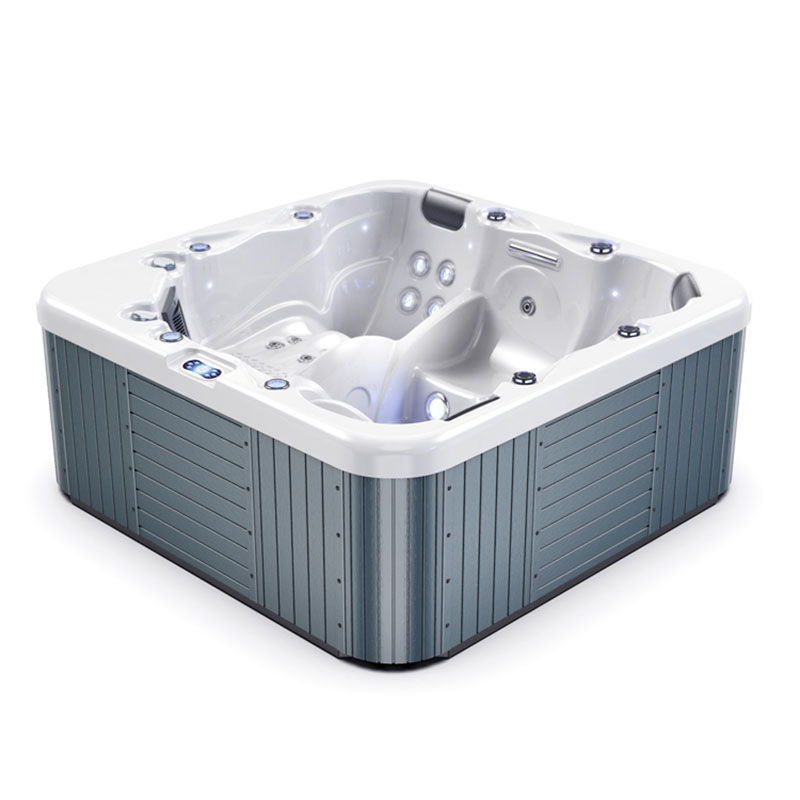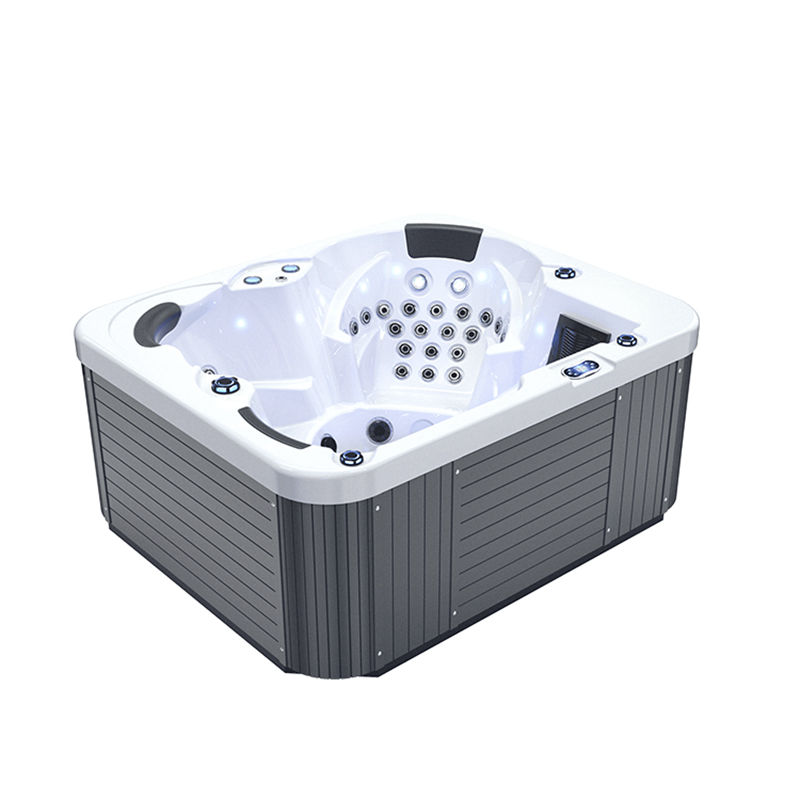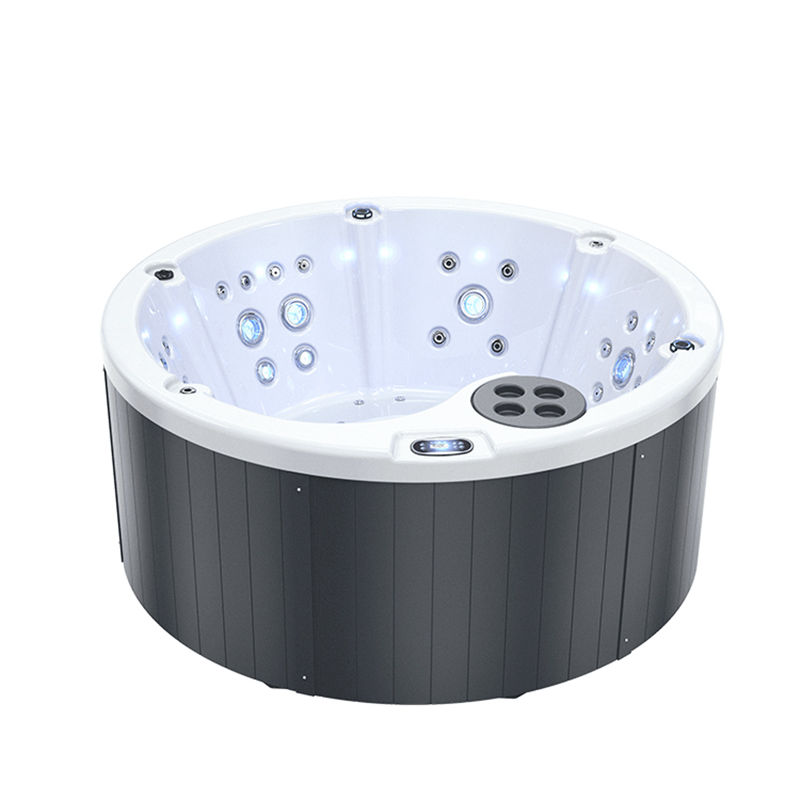Whether it's used to relax the body, relieve stress, or promote blood circulation, jacuzzi bathtubs are widely favored for their versatility.
There are many types of jacuzzi bathtubs on the market, and one of the most common types is the cold jacuzzi bathtub and the hot jacuzzi bathtub. Although the two devices have their own advantages in terms of use, there are significant differences in their working principles, uses, and effects on the body.
This article will explore the differences between cold jacuzzi bathtubs and hot jacuzzi bathtubs in detail from the following aspects to help consumers better understand the functional characteristics of the two and make a choice that suits their needs.
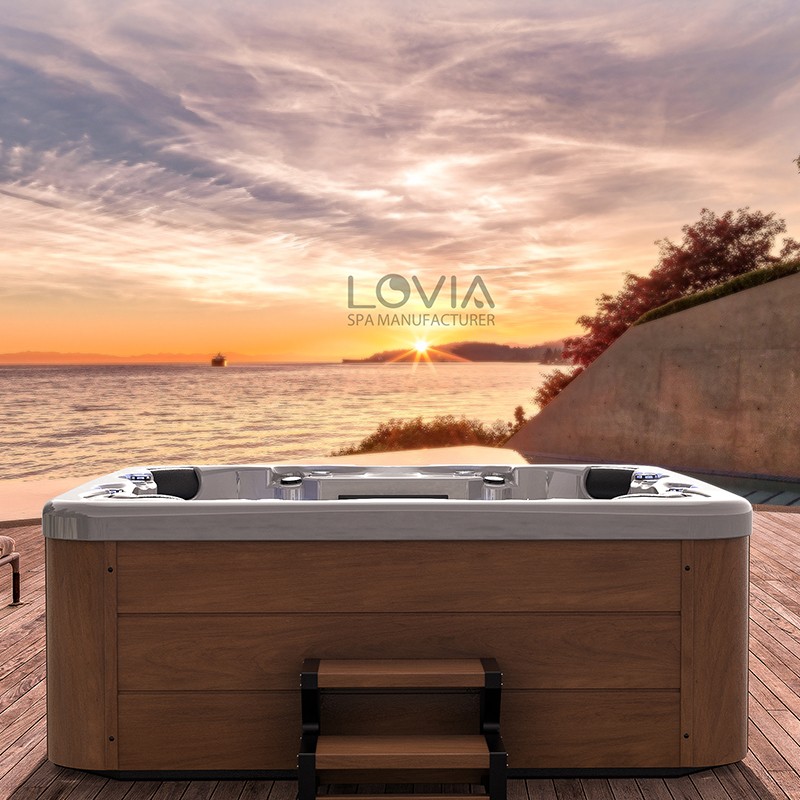
What is a cold jacuzzi bathtub?
A cold jacuzzi bathtub uses water at a lower temperature, usually between 10-15 degrees Celsius. Cold jacuzzi bathtubs are generally used for treatment and recovery, and are particularly popular among athletes and fitness enthusiasts. Cryotherapy is an ancient recovery technique that helps relieve muscle fatigue, reduce swelling and inflammation by exposing the body to cold temperatures. A cold jacuzzi bathtub provides a massage effect to the user at low temperatures by equipping the body with powerful water jets.
How does a cold jacuzzi bathtub work?
The main mechanism of action of a cold jacuzzi bathtub is to quickly reduce local or systemic skin temperature through the cold water's low temperature effect. Low temperatures cause blood vessels to constrict, which helps reduce swelling and muscle soreness. At the same time, the pressure exerted by the cold water on the skin and muscles helps reduce tissue pain and reduce inflammation after sports injuries.
The water flow generated by the cold water plus the massage jets further promotes blood flow through mechanical stimulation, thereby accelerating the excretion of waste products in the body. Athletes often use a cold jacuzzi bathtub to help recover after intense training or competition because it can effectively reduce fatigue and promote muscle recovery.

What is the main function of a cold jacuzzi bathtub?
1. Reduce inflammation and swelling: Cold water can significantly reduce blood flow to tissues, thereby effectively reducing inflammatory responses. For those who have undergone strenuous exercise, this effect of cold water can help reduce swelling that occurs after exercise.
2. Accelerate muscle recovery: After a cold bath, blood circulation will quickly return to normal levels or even speed up, which helps oxygen and nutrients to be delivered to tired muscles more quickly, thereby accelerating the recovery process.
3. Reduce pain: Cold water can not only relieve pain by constricting blood vessels, but also stimulate the nervous system through temperature differences, helping to relieve neuropathic pain.
4. Boost immunity: Some studies have shown that short-term exposure to low temperatures, especially in combination with cold water therapy, may help improve the immune system's stress response ability and enhance the body's resistance.
Who is the cold jacuzzi bathtub suitable for?
The cold jacuzzi bathtub is usually suitable for athletes, fitness enthusiasts, or those who need to restore muscle function through cryotherapy. Especially for those who have been engaged in high-intensity exercise for a long time or are undergoing rehabilitation training after an injury, the cold jacuzzi bathtub can provide them with an effective recovery tool.
What is a hot jacuzzi bathtub?
A hot jacuzzi bathtub is one of the most common home spa equipment, with water temperatures usually between 36-40 degrees Celsius. Unlike a cold jacuzzi bathtub, a hot jacuzzi bathtub is more for relaxation and soothing. Through the interaction of hot water and water jets, a hot jacuzzi bathtub can help soothe tense muscles, reduce stress and promote blood circulation.
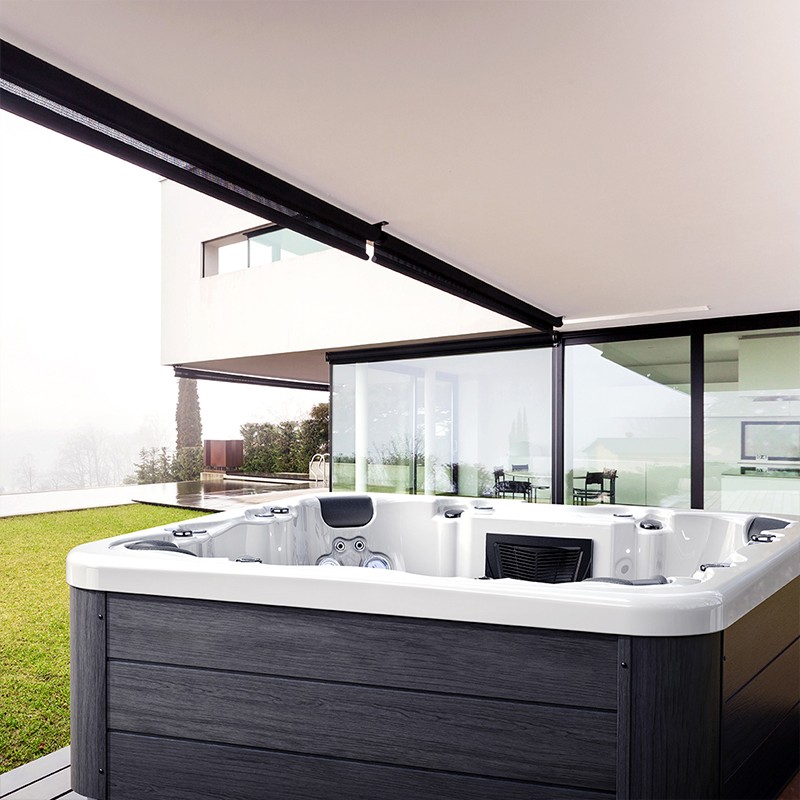
How does a hot jacuzzi bathtub work?
The core principle of a hot jacuzzi bathtub lies in the heating effect of hot water on the body. When the human body is immersed in hot water, the heat is transferred to the inside of the body through the skin, causing the blood vessels to dilate. The dilation of blood vessels increases blood flow, helping the blood to transport oxygen and nutrients to various parts of the body, especially tense and tired muscles. In addition, the massage jets use strong water jets to perform targeted massages on the body, further relaxing muscles and joints.
This massage with water jets not only stimulates the muscles, but also helps the body excrete accumulated waste, such as lactic acid, thereby relieving fatigue. The temperature of hot water can also help reduce the activity level of the sympathetic nervous system, thereby achieving a relaxing and stress-reducing effect.
What are the main functions of a hot jacuzzi bathtub?
1. Relieve muscle tension: Hot water can effectively relieve muscle tension, which is very helpful for people who sit in offices for a long time and those who engage in long-term physical labor. Deep muscle tension can be further relieved by the directional water flow of the massage nozzle.
2. Improve blood circulation: Hot water can promote blood vessel dilation, thereby increasing blood flow. This helps to increase the oxygen supply to various parts of the body and speed up the discharge of waste from the body.
3. Relieve joint pain: For arthritis patients or those who have joint pain caused by exercise or aging, a hot jacuzzi bathtub can reduce joint stiffness through heat therapy and provide short-term pain relief.
4. Reduce stress and anxiety: Hot water has a significant effect on the nervous system and can effectively relieve stress and anxiety. The relaxation of soaking in hot water can help improve mood and promote better sleep quality.
Who is the hot jacuzzi bathtub suitable for?
Hot jacuzzi bathtubs are suitable for almost everyone, especially those who need to relieve physical and psychological stress through heat therapy. For middle-aged and elderly people or patients with chronic diseases, hot jacuzzi bathtubs can provide gentle care to help them relieve pain and relax. It is also part of home spa and is often used for daily relaxation and leisure.
What is the difference between cold jacuzzi bathtub and hot jacuzzi bathtub?
Although cold jacuzzi bathtub and hot jacuzzi bathtub are essentially massages through water and water flow, there are obvious differences in their actual effects and applicable scenarios. By comparing the working principles and effects of the two, you can better understand their differences.
1. Temperature and purpose of use
· Cold jacuzzi bathtub: The water temperature is as low as 10-15 degrees Celsius, mainly used for recovery and treatment. Its core function is to reduce inflammation, swelling and fatigue, especially suitable for use after strenuous exercise or injury.
· Hot jacuzzi bathtub: The water temperature is usually 36-40 degrees Celsius, and it is more used for relaxation and decompression. It can soothe tense muscles, help relieve joint pain, and promote blood circulation, making it suitable for daily relaxation.
2. Physiological effects
· Cold jacuzzi bathtub: Cold water triggers vasoconstriction and reduces local inflammatory reactions, thereby reducing swelling and pain. Cold water can also provide a short-term numbing effect by reducing the excitability of nerve endings, thereby relieving acute pain.
· Hot jacuzzi bathtub: Hot water promotes vasodilation and increases blood flow, thereby accelerating metabolism and helping to excrete metabolic waste. The regulatory effect of hot water on the nervous system can also help reduce anxiety and stress.
3. Applicable scenarios
· Cold jacuzzi bathtub: Suitable for use after exercise and muscle injury, especially for those with muscle soreness or inflammation. It has a good recovery effect.
· Hot jacuzzi bathtub: Suitable for daily use, especially for those who need to relieve stress, improve sleep, and relieve joint pain.
4. Usage time
· Cold jacuzzi bathtub: It is usually recommended to soak in cold water for no more than 10-15 minutes to avoid adverse effects of low temperature on the body.
· Hot jacuzzi bathtub: Hot water baths can usually last for 20-30 minutes, but be careful to avoid soaking for too long to avoid problems such as low blood pressure or dry skin.

How to choose a suitable jacuzzi bathtub?
When choosing a cold jacuzzi bathtub or a hot jacuzzi bathtub, you should first clarify your needs. If you often do strenuous exercise or have specific treatment needs such as muscle strain or acute inflammation, a cold jacuzzi bathtub may be a better choice. If you need to relax, relieve stress or promote blood circulation through hydrotherapy, a hot jacuzzi bathtub is more suitable.
In addition, age and physical condition are also important factors affecting the choice. Young athletes or fitness enthusiasts may prefer cold jacuzzi bathtubs, while older people or people with chronic diseases are more suitable for hot water therapy. No matter which type of jacuzzi bathtub you choose, you should use it reasonably according to your personal physical condition and doctor's advice to avoid health risks caused by excessive or improper use.
How can I benefit from your wholesale pricing structure?
Our wholesale pricing is structured to benefit both small businesses and large buyers. As the order quantity increases, unit prices decrease due to economies of scale. This allows resellers to achieve better margins and competitiveness in their local markets. We also offer seasonal discounts, exclusive offers for repeat buyers, and promotional support. Buying directly from our factory ensures the lowest price per unit without compromising quality or service.


